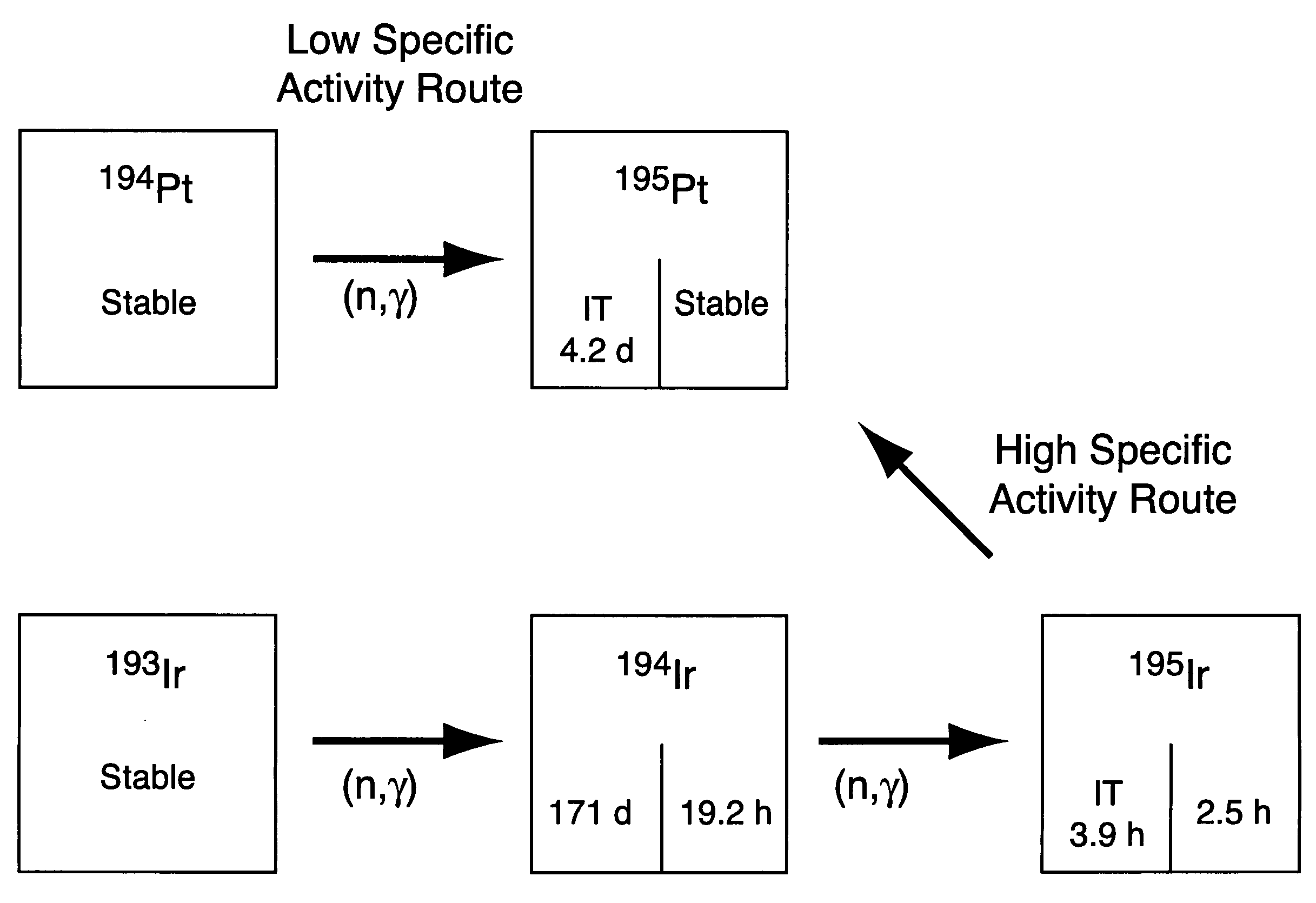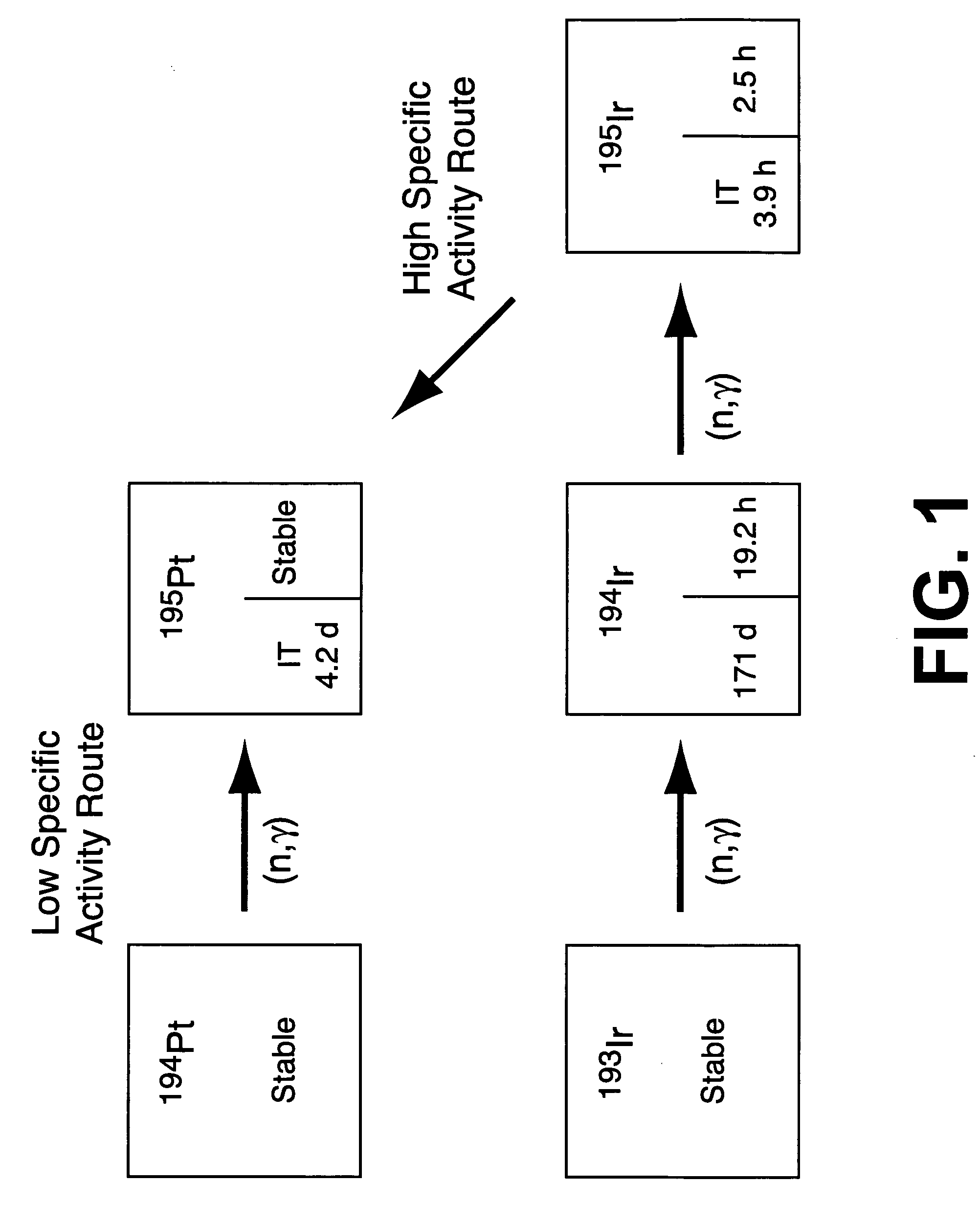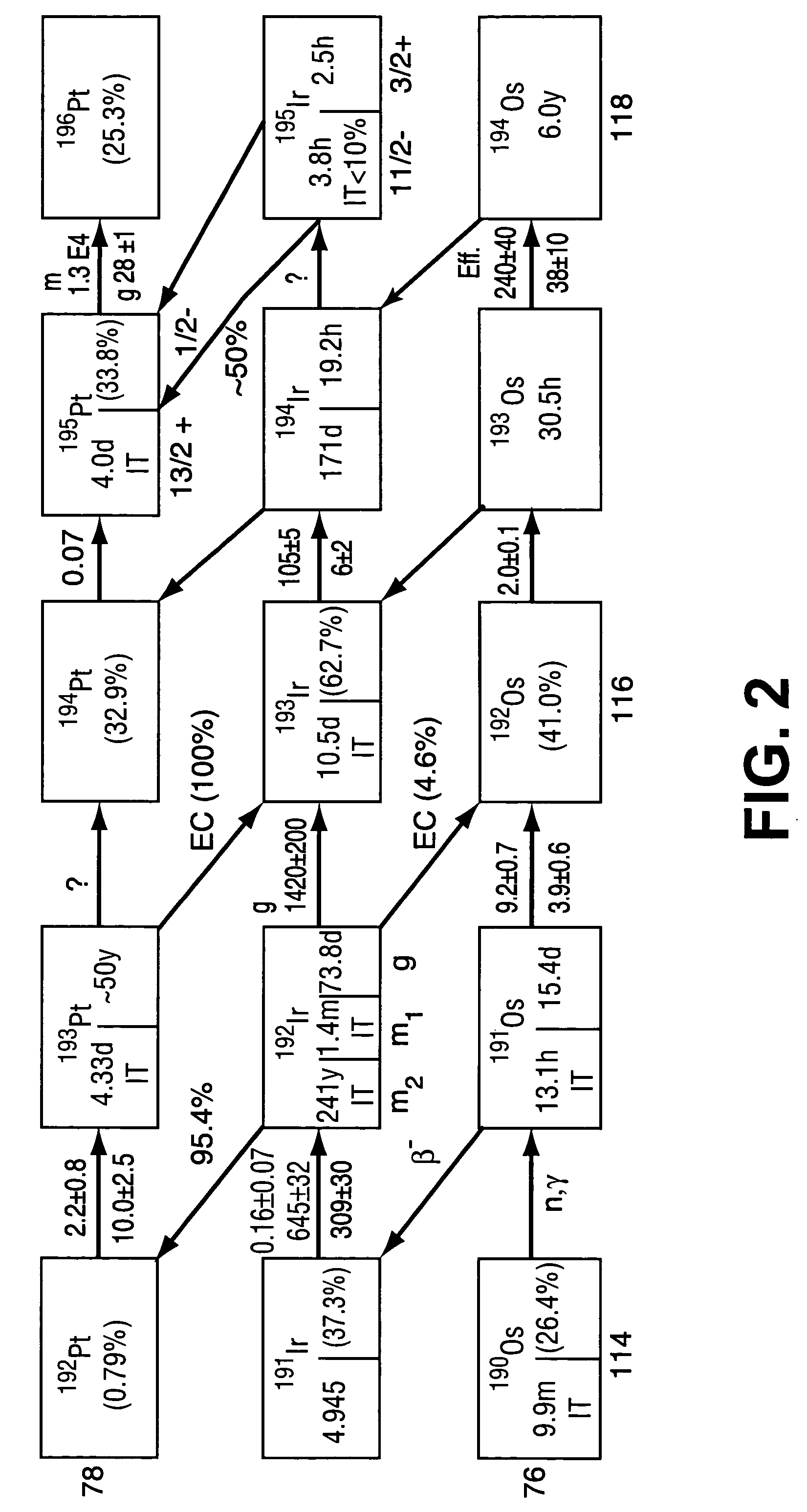High specific activity platinum-195m
a platinum-based, high-specific activity technology, applied in the field of high-specific activity platinum-based platinum-based, can solve the problem that the specific activity of sup.195mpt is not currently available in sufficient high-specific activity levels
- Summary
- Abstract
- Description
- Claims
- Application Information
AI Technical Summary
Benefits of technology
Problems solved by technology
Method used
Image
Examples
example ii
[0041] Material irradiated in accordance with Example I was dissolved as follows. The rabbit was cut open in a hot cell and the quartz ampoule was emptied into a beaker. The quartz ampoule was washed with HCl, H.sub.2O, and then alcohol. The ampoule was crushed in a break tube and the contents thereof were emptied into a polytetrafluoroethylene-lined pressure bomb having a capacity of 22 ml. 15 ml of 10:1 aqua regia (HCl:HNO.sub.3) was added into the pressure bomb and the bomb was assembled. The assembled bomb was heated in an oven at 220.degree. C. for two hours. The material dissolved into the solution with very little residue remaining.
[0042] Chemical Separation of .sup.195mPt Product from Ir
[0043] The effective separation of the microscopic amount of Pt product from the macroscopic amount of Ir is an important aspect of the present invention. Conventional methods for the separation of platinum from iridium, including solvent extraction and chromatographic methods, have not been ...
example iii
[0046] Pt product was separated from Ir as follows. AG-50Wx4 (100-200 mesh) resin was loaded into a column having a volume of 0.2 ml and conditioned with >1 ml of a solution comprising 1M HCl and 0.2M thiourea. An aqua regia solution resulting from the process of Example II was heated to near-dryness, re-dissolved with a minimum of the HCl-thiourea solution--about 0.5 ml, and loaded onto the column. The column was then eluted with 4.8 ml of the HCl-thiourea solution to elute the Ir. The column was then eluted with 3.3 ml 12M HCl (without thiourea) to elute the Pt.
[0047] Data from Example III, summarized in FIGS. 5 and 6, demonstrate that 99% of the Iridium was eluted from the column with 4.8 ml of HCl-thiourea solution (about 24 column volumes) with about 20% loss of Pt. It is contemplated that the actual Pt loss under the same conditions may be reduced if a cut is made at <24-column volume elution.
example iv
[0048] A larger-scale production of .sup.195mPt is carried out as generally described hereinabove and more particularly as follows. 100 mg of highly enriched .sup.193Ir metal target (>90% enrichment, produced at ORNL) is subjected to 7-10 day neutron-irradiation in the hydraulic tube facility of the ORNL HFIR in accordance with the above description. Following irradiation, the metal powder is dissolved in 100 ml aqua regia in a pressure bomb having an inert liner. The bomb is heated for at least 1 hour at 220.degree. C. in a convection, induction, or microwave oven. After complete dissolution, the dark brown solution containing Ir and Pt is evaporated to near-dryness and the residue is dissolved with in 20 ml of a solution comprising 1M HCl and 0.1 M thiourea. The target solution is loaded on a 4 ml volume cation exchange column (AG 50.times.4, 200-400 mesh), pre-equilibrated with >8 ml of the HCl-thiourea solution. The Ir is eluted with 20 bed volumes of the HCl-thiourea solution. ...
PUM
 Login to View More
Login to View More Abstract
Description
Claims
Application Information
 Login to View More
Login to View More - R&D
- Intellectual Property
- Life Sciences
- Materials
- Tech Scout
- Unparalleled Data Quality
- Higher Quality Content
- 60% Fewer Hallucinations
Browse by: Latest US Patents, China's latest patents, Technical Efficacy Thesaurus, Application Domain, Technology Topic, Popular Technical Reports.
© 2025 PatSnap. All rights reserved.Legal|Privacy policy|Modern Slavery Act Transparency Statement|Sitemap|About US| Contact US: help@patsnap.com



